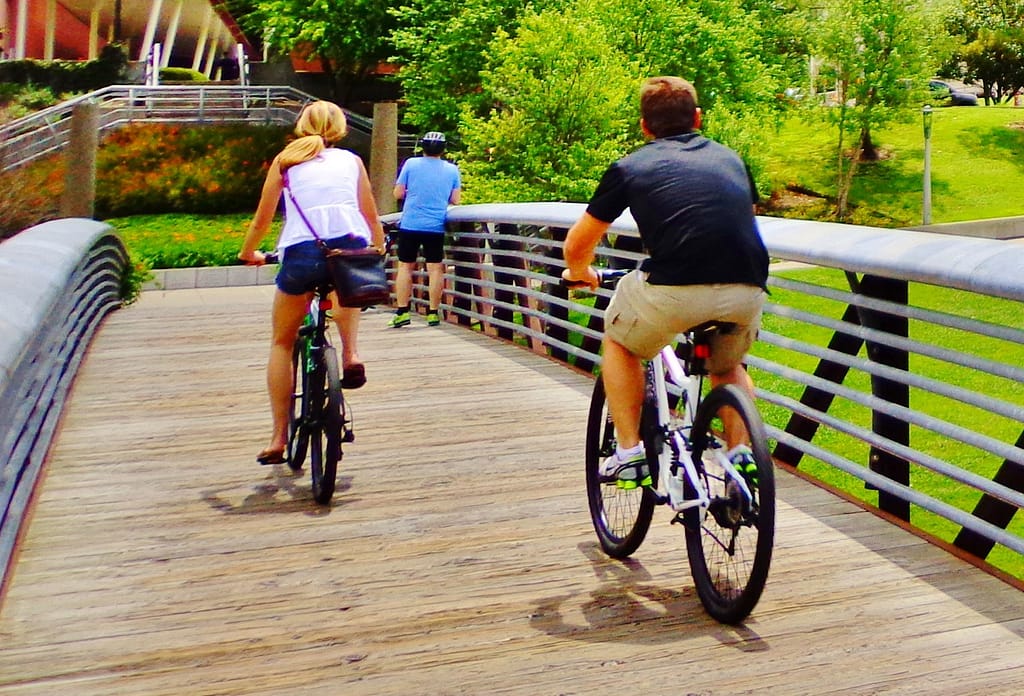Don’t have time to read the blog? Watch it instead!
You’ve decided to build a pedestrian bridge – excellent! Some things, like the budget, location, and upkeep requirements, are relatively straightforward to determine in light of available resources. But what will the bridge look like?
From a simple platform to an elaborate statement structure, you’ll want to have input on design elements, how the bridge complements the setting, and any creative or practical features (such as lighting, benches, or accommodating trees or rock outcroppings). Sometimes this part of the plan can be a little fuzzy.
We suggest you start by setting up an internal team with a project manager or other contact person for the vendor(s) you work with. Meet regularly to plan the project and keep track of all the design ideas you want to consider, including what your team likes and dislikes about each.
Here are some of our favorite tips for visualizing different types of pedestrian bridges:
1. Brainstorm
Try your best to record all ideas without rejecting anything outright immediately: there may be some elements of an otherwise unrealistic idea that can be incorporated, such as a color scheme or architectural style. Brainstorming is about gathering ideas, not deciding on a final design at this stage. Also, consider the personalities on your team and be sure everyone is encouraged to contribute. Spend time thinking about and collecting images before the group meets so everyone has an idea or two to share. And finally, remember that while brainstorming is fun for some, it can be stressful for others.
2. Go on a field trip individually or as a group
Visit other places in your area to see what they’ve done, including organizations that differ from yours. For example, park bridge planners should feel free to visit golf courses, urban trails or streetscapes, and other public settings to get ideas.
3. Look at the bridges you see everyday with fresh eyes
Take note of bridges you see on your commute, even vehicle bridges with design elements or visual effects you can emulate. For example, try to articulate exactly what it is that you like about the art deco-inspired bridge that catches your eye as you drive under it each day on your way to work.
4. Go online
Try a Google image search, or visit sites like Architectural Digest or Archdaily.com, Pinterest, or Instagram. Some of what you find might be larger or more complex than what you need, but they can still be sources of clever or creative use of materials, plants, lighting, or colors. Many grandiose designs can inspire theme and mood on a smaller scale project.
5. Search your memory
When you think of a footbridge, do you automatically envision an angry troll and three billy goats from the famous Norwegian fairy tale? Or do you picture an inviting, romantic platform with a delicate railing? Was there a bridge you loved to cross at the zoo or the park when you were a child? Have you always marveled at drawbridges or covered bridges? See if you can put words to these memories: modern, sleek, rustic, primitive, welcoming.
6. Draw it
There’s no need to create a perfect structural engineer’s rendering, just draw out some basic ideas. Or take a picture of the location, enlarge it, and overlay it with thin paper to draw on.
7. Drop the pressure!
If your team is feeling pushed to come up with the most creative, beautiful, signature solution, that pressure can really stifle progress. Not every situation calls for a fanciful or clever bridge – sometimes a utilitarian solution with visual appeal and simple lines is exactly what’s needed. Acknowledging what suits your setting best can make it easier to visualize the finished project and the features you want to include or skip.
8. Check references
If you’ve selected a company to design and build your bridge, ask them for references you can contact, for pictures of completed projects, and for suggested websites, books, or other sources of inspiration.
Above all, we hope you take some time to enjoy the visioning process – it can be a fun and rewarding exercise. If you’re still not sure how to get started with your bridge, please download our ebook or contact us!


